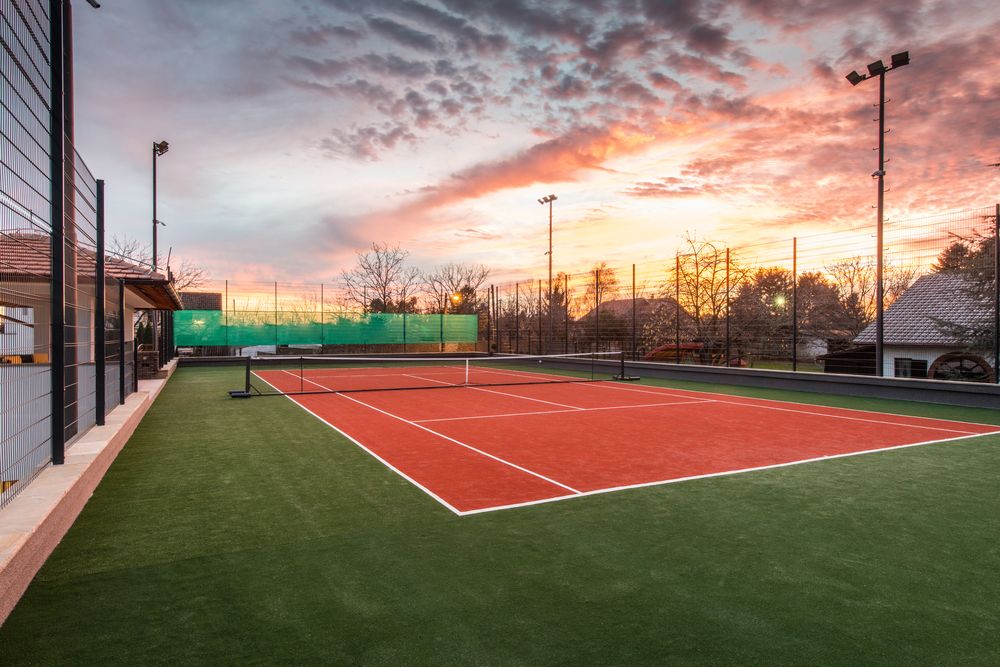Replace Old Netting To Keep Your Facilities Like-New
Read More

With a few forward-thinking upkeep steps, you can still enjoy your outdoor tennis courts even with frigid temps on the forecast. Although many maintenance steps remain the same throughout the year, colder weather conditions call for additional planning, especially if players will be using the space during the colder months.
To make the most of your courts this season, here are some helpful ideas to protect the players, court equipment, and your surfaces proactively.
In general, most outdoor courts will remain playable until heavy snowfall or freezing temperature arrives. It’s also important to note that specialty surfaces like clay will need to be covered to avoid damage, while asphalt and cement surface types are often fine without a weatherproof covering.
Regardless of surface type, all court materials are prone to damage from freezing and thawing cycles. To prevent premature cracking and surface warping, keeping your surfaces clear of pooling moisture and gently brushing away light snowfall will improve surface integrity and playability before the colder conditions arrive. For clay courts that naturally retain moisture, you will need to cover the surfaces in advance.
The best way to protect your budget, and your courts, and stay ahead of necessary tennis court repairs begins and ends with vigilant surface monitoring. Due to the higher risk of catastrophic cracking on asphalt, cement, and clay courts during the colder months, up your inspection routine to daily or bi-weekly viewings and search for any unusual court concerns like uneven sections, new cracking, and worn surface problems.
If your court has windscreens or netting, you can extend the life of these expensive equipment pieces by removing them before any harsh conditions arrive. While light snow accumulation will not cause a problem for most windscreens or netting systems, any more serious storm systems can cause irreversible wear and tear.
If you have an adaptable netting system, lowering the nets or stashing them in a nearby shed can help to extend the playability of your courts throughout the intermittent conditions of fall and spring. For example, if a passing storm is on the forecast, you can remove the nets temporarily, wait until the surface is clean and dry, and then reinstall the nets if appropriate.
To prevent invasive moisture and dirt from affecting the integrity of your surfaces, pair court cleanup and repairs with the inspection steps above. Be on the lookout for natural debris, trash, and accumulation from pests, mud, and anything else that may have blown onto your courts.
Along with routine debris removal, prompt damage repair is essential for long-term court health. Before and after the winter weather, reach out to our pros at Keystone Sports Construction for a comprehensive surface investigation, affordable tennis court resurfacing, quick crack repairs, and organize a maintenance plan ahead of the weather for years to come.